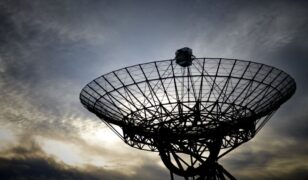On May 3, Arlington, VA-based Telesat Government Solutions, a U.S.-incorporated, wholly-owned subsidiary of Telesat, announced a US$30.65 million Funded Space Act Agreement from the National Aeronautics and Space Administration (NASA) as a partner for its Communications Services Project (CSP). Since NASA plans to decommission its owned and operated Tracking and Data Relay Satellite (TDRS) system in the coming years, the agency’s CSP will evaluate commercial SATCOM networks’ feasibility to reliably support future near-Earth missions.
Under the agreement, Telesat Government Solutions will demonstrate Telesat Lightspeed’s future space-to-space relay capabilities. As part of the initiative, Telesat Government Solutions intends to partner with Planet Labs PBC to develop a space-based RF terminal hosted on two Earth observation spacecraft.
Once in orbit, Telesat Government Solutions will demonstrate Ka-band, high throughput transmission from the space-based RF terminals to Telesat operated satellites flying at a higher altitude, as well as mesh, space relay connectivity between the optically-linked Low Earth Orbit (LEO) satellites before downlinking data to representative NASA operation centers.
Optically-linked LEO satellites, which are native to Telesat Lightspeed, provide resilient, assured space-to-space connectivity for manned and unmanned space missions. Services such as those being demonstrated through this agreement will create a space-to-space relay service for NASA and other government agencies to support mission requirements.
“Space Relay services via the advanced Telesat Lightspeed architecture provide a compelling value proposition for NASA and other government agencies, and we are excited to pioneer this promising and high-growth market,” said Tom Eaton, President of Telesat Government Solutions. “NASA’s collaboration with the industry has been most impressive as they aim to leverage commercial sector investment and innovation to meet their future near-Earth communications requirements.”
Source: NASA
If you enjoyed this article, please consider becoming a paid subscriber. Your support helps keep our site ad-free.








